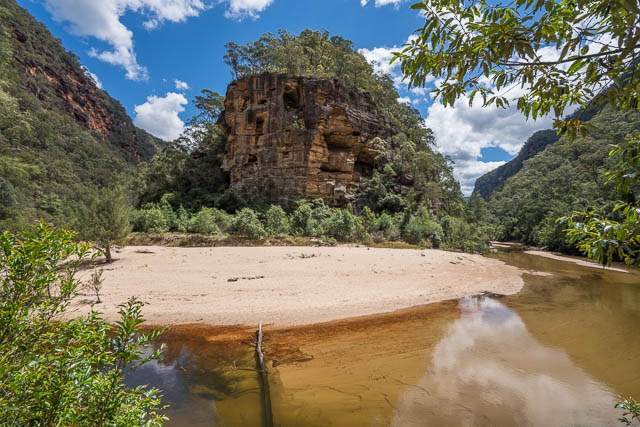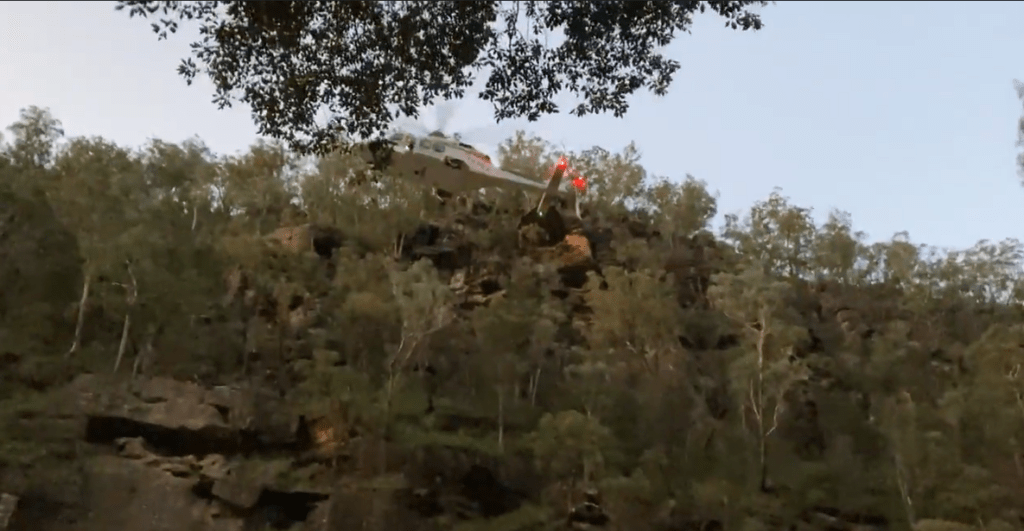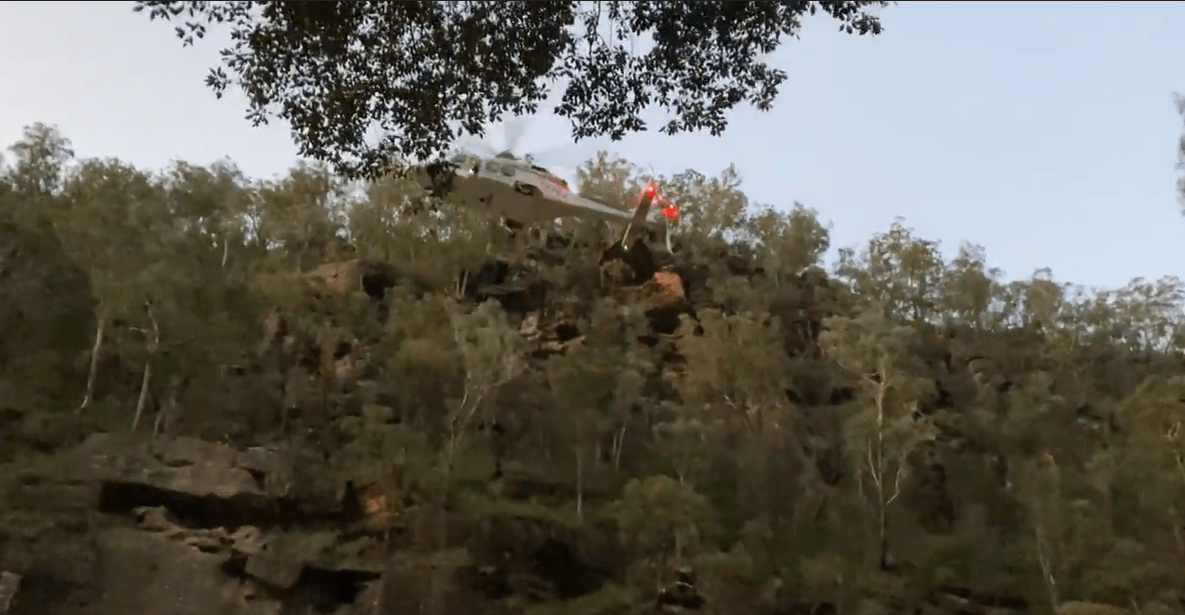
Helicopter Rescue in Canoe Creek
Wollemi National Park
On the 10th of September 2022, a group of members from the UNSW Outdoors Club (UNSWOC) set off on an overnight hike into the Canoe Creek area, a remote and rugged region of Wollemi National Park. On that Saturday afternoon, a party member slipped and fell down the embankment, dislocating their shoulder. The injured UNSWOC member was later winched by Toll Air Ambulance out of the remote wilderness area to Nepean Hospital for medical treatment.
The group consisted of five UNSWOC members, including one Trip Leader (TL), a Co-Trip Leader (Co-TL) and three relatively new members. They were equipped appropriately for the trip, as per the TL's packing list. The TL was experienced in other hiking and outdoor activities but it was their first time leading an UNSWOC trip as a TL.
"Expect the first day to be a decent track with a steep descent and a river crossing (typically waist deep) to the stunning Canoe Ck, while the second day we ascend the lesser trafficked pass #18 with excellent views over the Canoe Ck junction. We will probably encounter heavy chest high scrub up on a bush bash back to the cars"
UNSWOC Website Canoe Creek Trip Sign Up
The Accident
Whist navigating the heavily vegetated and eroded banks of Canoe Creek, the group carefully walked across a ledge in a small cliff line near the bank. This ledge was 0.5m wide with 2-3m of cliff above, and ~2m below to creek bed, with other obstacles blocking alternative paths. Whilst the TL successfully navigated the narrow ledge, at approximately 15:30 - 15:45, one member accidentally fell down the 2m drop to the sandy creek bed below. Although they landed on their two feet, the weight of their hiking pack caused the member (referred to as the 'casualty' from now on) to roll further. This resulted in a dislocated left shoulder as they rolled into the sandy creek bed, propping up against a large boulder. The casualty was in significant pain and First Aid was rendered from the TL. With a previous medical history of this injury the week prior, the casualty decided to attempt to reset the joint themselves. The TL and Co-TL had discussed that if the shoulder did not self-relocate soon, a helicopter would be needed and set a deadline for this decision to be made.
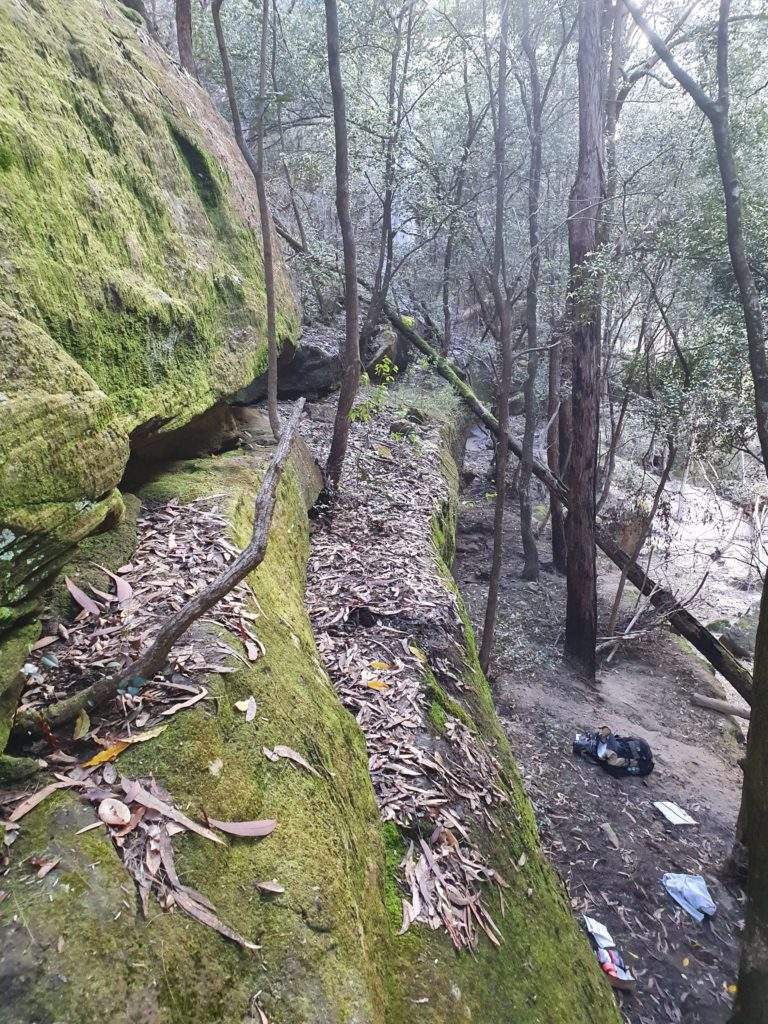
Emergency Beacon Activation
With the dislocated shoulder not in the joint and the afternoon light soon approaching, the TL made the decision to activate an Emergency Beacon. At 16:05, the TL activated a SPOT Gen 3 device, registered to Scouts NSW. Australia Maritime Safety Agency (AMSA) contacted the Scouts NSW contact associated with the beacon, who then contacted the TL's Emergency Contact and the UNSWOC Safety Officer ('SO'). There was a significant delay between the beacon activation and the SO being made aware of the incident, as the beacon was not an UNSWOC device. By 17:05, the SO had contacted AMSA and provided trip intentions, maps and the participant list to the AMSA control room. By 17:36, the SO provided the same information to Katoomba Police station.
With darkness soon approaching, the TL had moved the group to a more suitable camping area, assuming that the party would be forced to stay overnight. The party was uncertain what rescue efforts would be undertaken or if their distress signal had made it out of the canyon-like walls of Canoe Creek. The SPOT Gen 3 device used did not support two-way communication and there was no mobile reception in this remote area of the Wollemi National Park.
Helicopter above
At ~17:51-17:47 (Image timestamp), as dusk was approaching, the thump of rotor blades could be heard and the party used emergency blankets to signal the helicopter. Approaching with strong down wash, the Toll Air Ambulance arrived overhead. The camp was quickly secured from the intense downdraft of the helicopter and the campfire was extinguished with water. The strong downdraft caused large branches to fall and tents to be battered. An Intensive Care Paramedic was then winched down to the party to assess the casualty’s condition. After some time, at 18:20, the casualty and IC paramedic were winched into the helicopter and transported on a 20 minute flight to Nepean Hospital.
Aftermath
In parallel, Arc @ UNSW was contacted by the SO at 17:49 informing them of the nature of the incident. All participants’ emergency contacts (including some overseas) had been notified than an incident had occurred. After the SO inquired for updates, at 19:22, NSW Police informed that the casualty had been transported to Nepean Hospital and provided details. The SO contacted the hospital and later spoke to the casualty over the phone. Family members were informed of the situation and that the group would likely exit the following day.
The remaining members of the UNSWOC party (4 members) walked out back to their vehicle by 12:35 on Sunday, September 11th, and communicated their safe return. The casualty was discharged from the hospital on Sunday and was otherwise well.
Detailed notes and a debrief were taken in the days following the incident. Arc and UNSW were notified and insurance documents and procedures were followed. All records renotified UNSWOC.
Analysis
The Trip Leaders and UNSWOC Members did very well to make sensible and rational decisions, look after group welfare and act to safely evacuate the casualty and self-rescue the rest of the party. Trips, slips and falls remain a likely hazard to occur in any technical canyon, hiking or other outdoor terrain. Accidents in remote areas, such as this area of the Wollemi, present particularly challenging rescue environments and must be considered in trip planning.
Could anything have prevented the accident?
As stated above, trips, slips and falls remain a likely hazard to occur in any technical canyon, hiking or other outdoor terrain. It is important for each member and TL to conduct a self-assessment before embarking on any trip. This is to ensure you are mentally and physically well to undertake an adventure including understanding how pre-existing or recent injuries may impact your abilities.
What went well?
The TL and group did an excellent job in preventing further injury or accident to the party and made good decisions by calling for help as early as practical. Considering the limited daylight, the group made a good choice to activate the beacon during daylight hours. The TL and the group were adequately prepared for an overnight stay and effectively managed the physical and physiological welfare of the party. The party adjusted their plans for the remainder of the trip, stayed cool and safely walked out without any further incidents on Sunday.
Feedback from the Trip Leaders and UNSWOC
With the casualty evacuated by helicopter, the UNSWOC party conducted a quick debrief. A further discussion between the SO and the TL in the week following the incident completed the review of this accident.
The importance of bringing a registered PLB and equipment to be self-sufficient in remote areas cannot be overstated. Any PLB or communication device, preferably a UNSWOC device, must have trip intentions registered, maps provided to emergency contacts and a clear overdue time to alert authorities. Prior to leaving for a trip, contacts of UNSWOC members should be shared with emergency contacts.
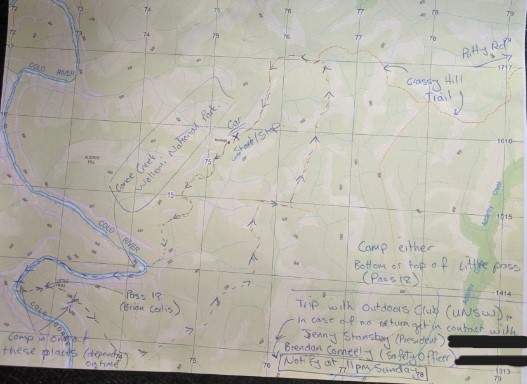
Prior to trips starting, UNSWOC TLs typically give a welcome and safety message as well as a car-park gear check. The group felt that a warning to new participants about the inherent risks and dangers would be useful for all trips and should continue. They also emphasised the need for trip participants to speak out when uncomfortable or spotting an unsafe situation or an action beyond their ability. Stressing the importance of this point in the car-park talk would be good for all trip leaders and creates a healthy and safe club environment.
Immediately after the incident, the TL made a good decision to activate the device in the remaining daylight hours, recognising that the casualty was unfit to walk out injured in such remote and challenging terrain. However, as the SPOT Gen 3 device does not support two-way communication and due to the geography, the party was unsure if their call for help had been received. The walls of Canoe Creek resemble a canyon with cliffs on both sides, which may obstruct satellite signals and impede rescue efforts. The period between activating the beacon and the helicopter arriving in the vicinity, was an anxious time for the party. A PLB is recommended to be carried and used as well as any satellite communication device, with radio signals better able to leave canyon environments. Fortunately. space blankets proved to be useful in signalling the helicopter.
The rotor downwash of the helicopter was extremely intense. There were a large number of falling trees and branches that fell down in the area as seen in the photo below. This is particularly dangerous in large parts of the Blue Mountains where recent bush fires have increased the risks of dead and falling trees. These falling branches could have easily injured other members of the party. Keeping the rest of the party some distance away from the winching or landing site is a good tactic, but not always possible in narrow canyons. The group reflected that it would have been much better to move the person away from falling tree hazards to a safer landing zone. In this case, with no suspected spinal injury, the injured person could have walked themselves to a clearing for a safer winching. This would have kept the rest of the party a safe distance away. Think about your level of training, MOI, spinal injury management and risks in your particular situation. Perhaps identifying a suitable landing site before the helicopter arrives and marking or signaling the location as the group. A paramedic can be winched to a safer landing location, then walk a short distance to the patient so that a medical professional can make an appropriate decision.
Owing to the intense rotor wash, the group had to hastily secure items in the camp. Tarps and tents were buffeted by the down force. The small campfire that had been made on right on the edge of the creek, and was easily pushed into the water as the helicopter approached. Be ready to quickly and completely extinguish a campfire or don't light one at all. Starting a bush-fire due to an out of control camp fire is not okay - be prepared and plan. If expecting a helicopter, be ready to pack everything away tents, gear and clothing, avoiding or clearing dangerous branches away
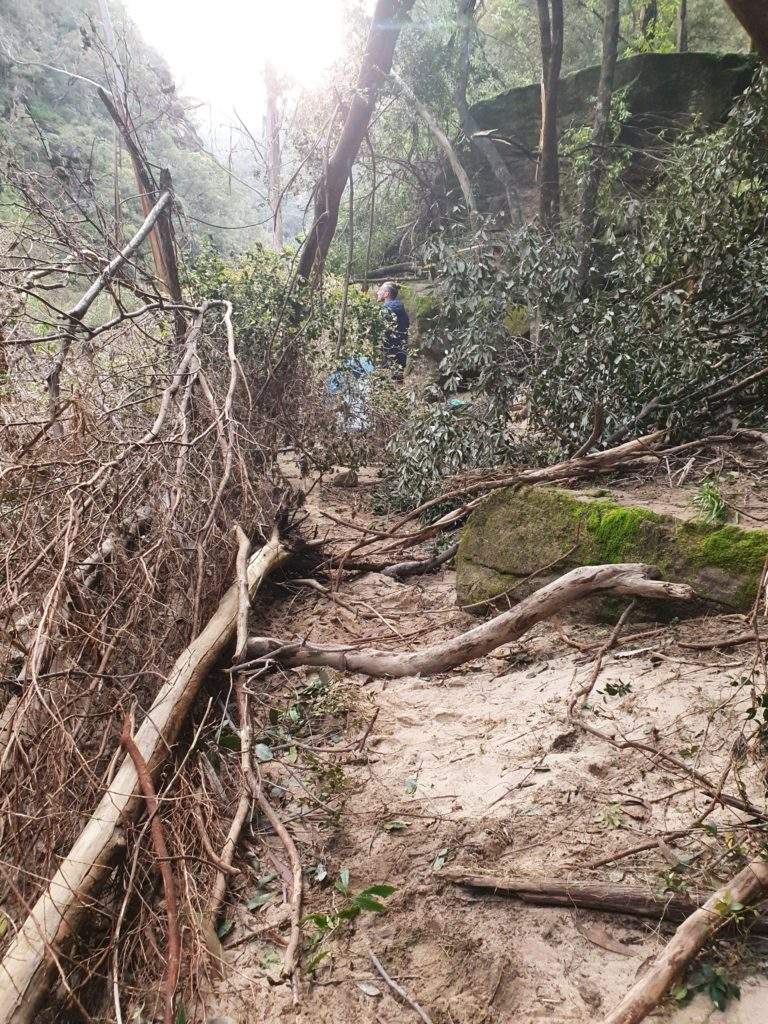
The presence of the Intensive Care Paramedic greatly reassured the party in taking care of the injured casualty and providing some psychological reassurance to the rest of the party.
The UNSWOC party benefited from having a formal debrief after a warm dinner and time to establish camp after the helicopter had left.
UNSWOC Trip Leaders are encouraged to think about how they would respond and take the learning lessons from this accident report.
Recommendations
PLBs are an important tool for Trip Leaders to use when appropriate. For an institutional setting like UNSWOC, the use of an PLB where appropriate in an emergency is always supported. However, PLBs will not keep you warm on an icy canyon overnight, hydrate you in summer weather or allow you to provide First Aid to party members. Improving your skills and equipment, planning ahead and making sensible decisions in the event allow for the best possible outcome. In this way, PLBs add an additional layer of support to your existing preparations and can be used to call for outside professional help and transmit a location allowing for faster search and rescue.
1. It is recommended that UNSWOC trips carry an UNSWOC registered beacon whenever possible. Regardless of the personal or UNSWOC PLB device taken, all trips must be registered on the AMSA website. This is to ensure the timely transfer of trip intentions to emergency services. Trip leaders must always ensure that a nominated emergency contact is provided detailed and useful trip intentions as well as an emergency overdue time on when to contact authorities.
2. It is recommended that UNSWOC consider two-way communication devices for groups in remote areas in addition to the mandatory PLB device for all canyon groups and overnight hiking trips. Other types of trips are strongly encouraged to carry a PLB and ideally a two-way communication device at all times. UNSWOC now has these devices free to use for all UNSWOC Trips.
3. It is recommended that further Remote Area First Aid and Wilderness First Aid training be undertaken for new and existing trip leaders. Large areas of the Blue Mountains and Greater Sydney National Parks in which UNSWOC members and trips frequent are considered 'remote' and therefore further first aid training is appropriate. This ensures Trip Leaders have a higher level of training and can provide safer trips.
Follow up: Resolution of action items
In November 2022, UNSWOC applied for, and was successful in, winning two Sports Development Grants (SDG). This financial support allowed UNSWOC to purchase and facilitate changes to improve safety for their members following this accident. The SDG and UNSWOC acted to purchase additional rescue communication devices and undertake remote and wilderness first aid training for Trip Leaders.
4 x PLB 406MHz Beacon – ResQLink™ 410 RLS and 2 x inReach® Mini 2 (Part No. 010-02602-00) and 24 months of service fees associated the the device were purchased.
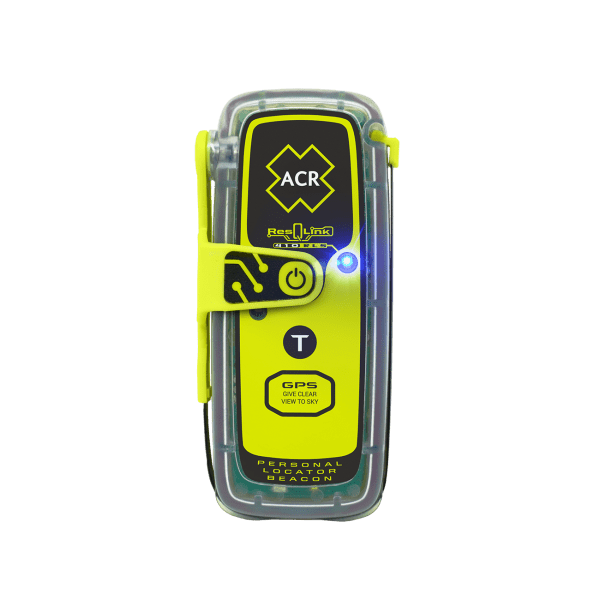
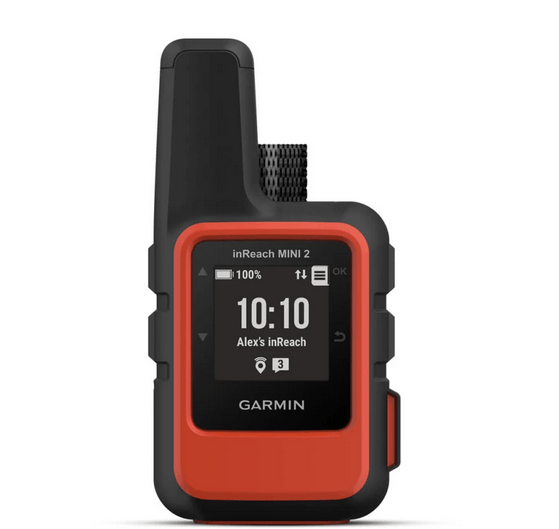
Satellite two-way communication devices are now available for club members to use, and to be taken on appropriate trips. This will assist UNSWOC parties in communicating any incident in areas without mobile reception.
Garmin Inreach Mini allows for two-way communication in areas with no mobile coverage
Satellite two-way communication devices are now available for club members to be used and taken on appropriate trips. This will assist UNSWOC parties in communicating any incident in areas without mobile reception.
Following the accident, 21 UNSWOC Members and Trip Leaders have now undertaken Remote Area First Aid or Wilderness Area First Aid qualification as part of the action items from this Canoe Creek Accident. This training was complete in February and May of 2023.
Stay safe, learn these lessons, think about your own plans, preparation and training. Keep adventuring.
Questions to safety@unswoc.org
Brendan - UNSWOC Safety Officer




